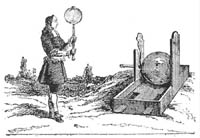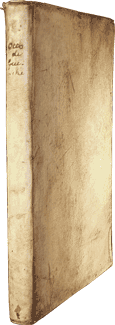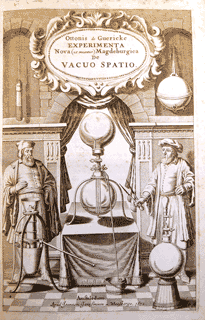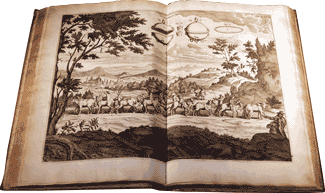|

Otto von Guericke
(1602 - 1686) |
First edition of one of the greatest books in the history
of experimental physics. In Experimenta Nova, Guericke proved the
existence of a vacuum through his famous experiment at Magdeburg
(illustrated by one of the double-page plates - see below), in which two
hemispheres of copper were fitted together, the air evacuated, and two teams
of horses set to pull them apart, which they could not do. To create the
vacuum, Guericke invented the air pump, and in the series of experiments
that followed he demonstrated the elasticity and weight of air.
He also constructed the first electrical generator and
demonstrated electrostatic attraction and repulsion. As the Wheeler Gift
catalogue remarks, 'this remarkable work on experimental philosophy ranks
next to Gilbert's in the number and importance of the electrical discoveries
described'.

Von Guericke's Electrical Machine |
The experimental discoveries were in fact the consequence
of Guericke's profound Copernican cosmological views on the nature and
composition of space, which are set forth fully in this work.
|


Experimenta
Nova (ut vocantur) Magdegurgica de Vacuo Spatio
Otto von Guericke
1672 |
|
|

The famous Otto Von Guericke experiment
Magdeburg, 1654. |
|
Dibner 55; Dibner Ten founding fathers of the electrical
science pp. 11-14; Evans Epochal achievements in the history of science 30;
Horblit 44; Norman catalogue 952; Parkinson pp. 112-113; Sparrow Milestones
of science 90; Wheeler Gift 170
|